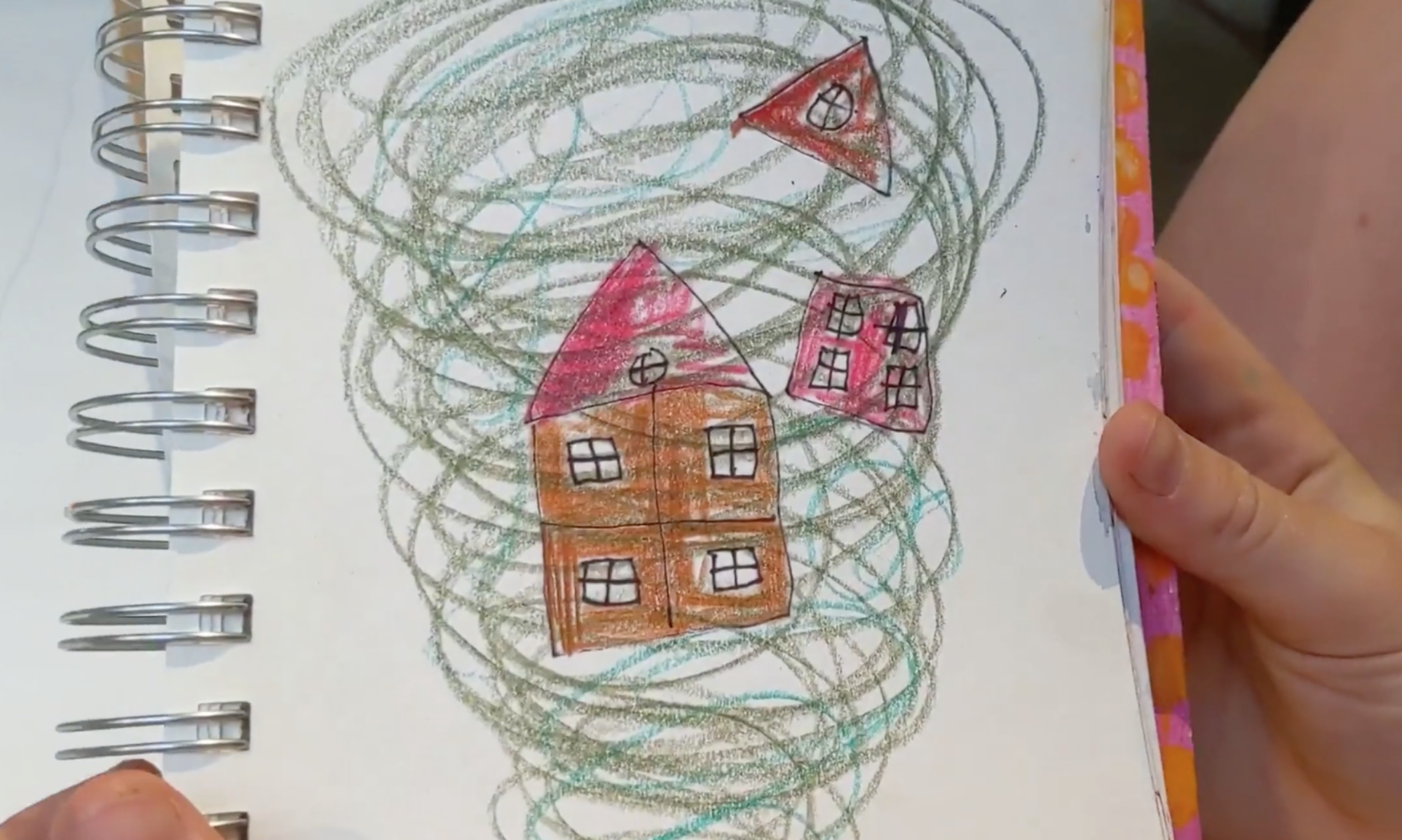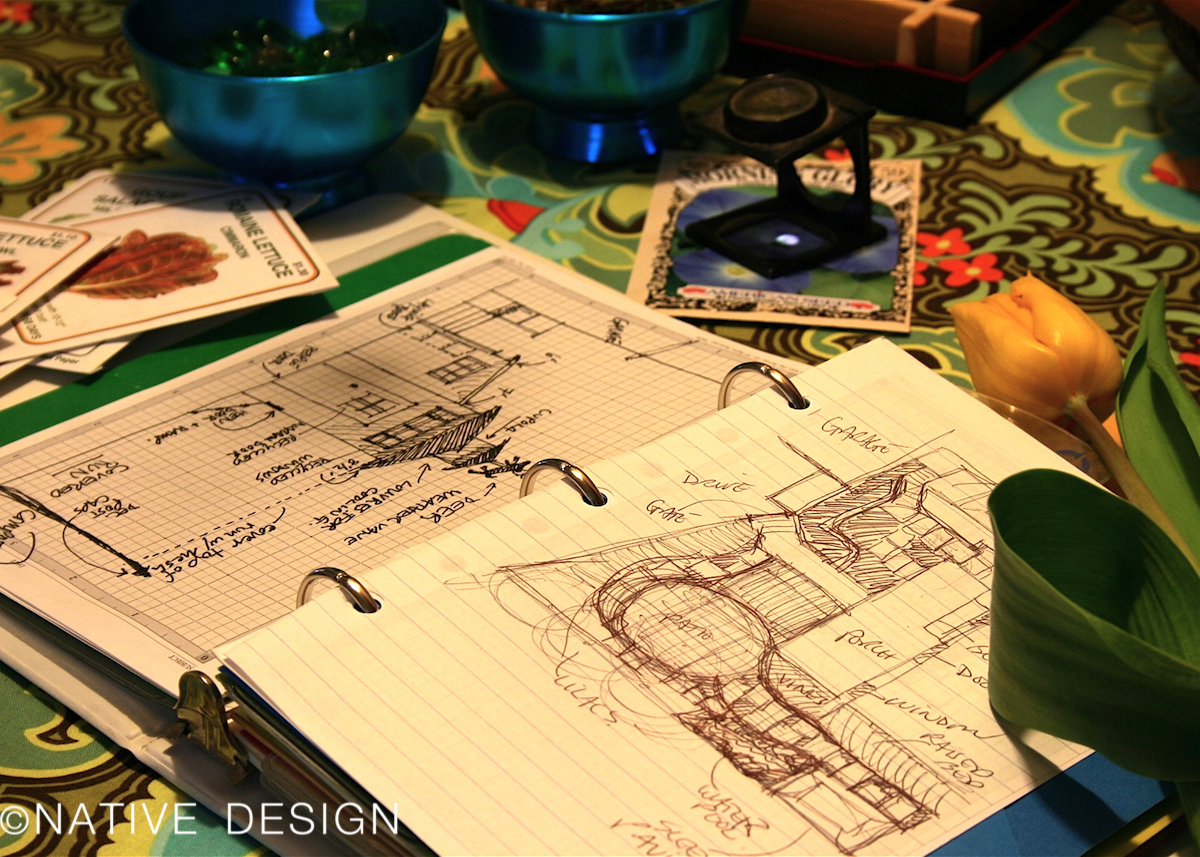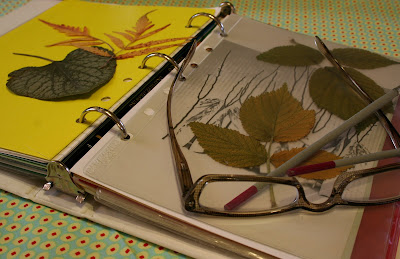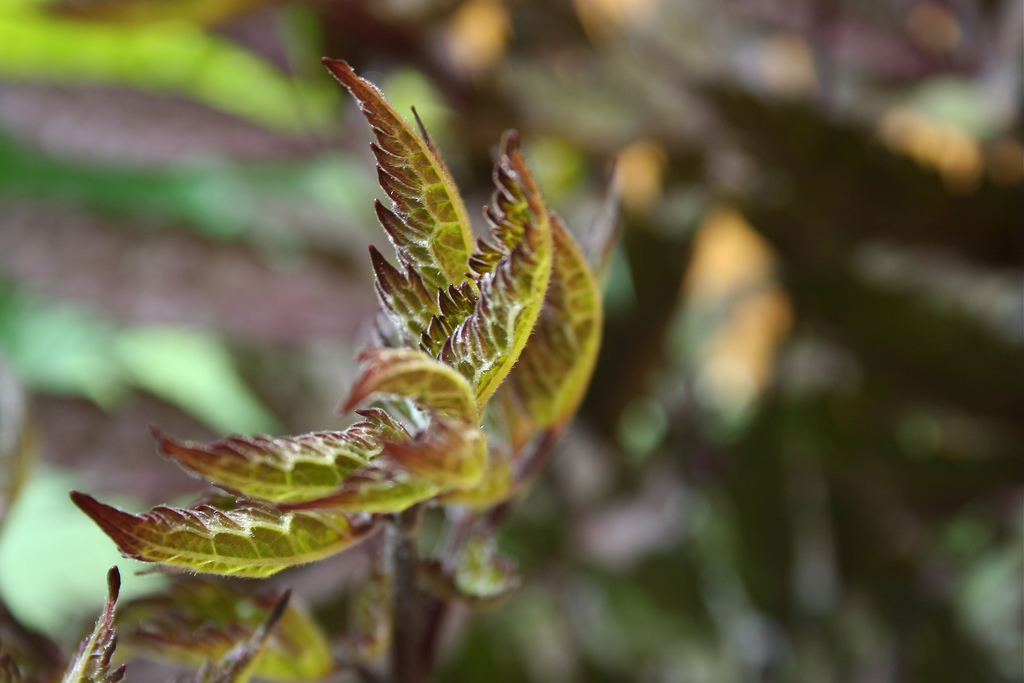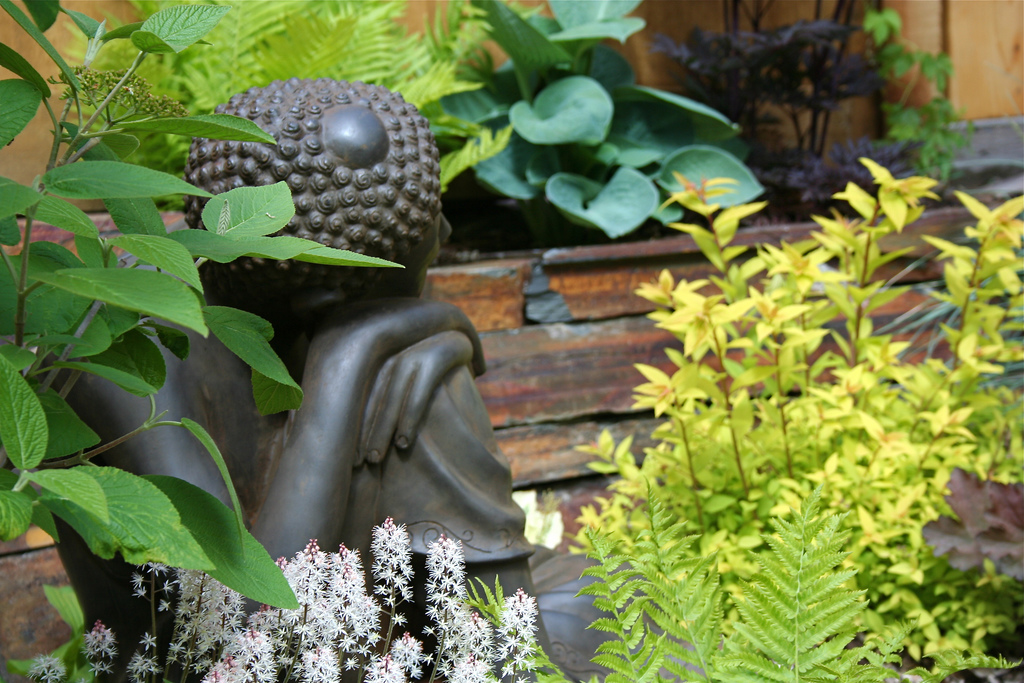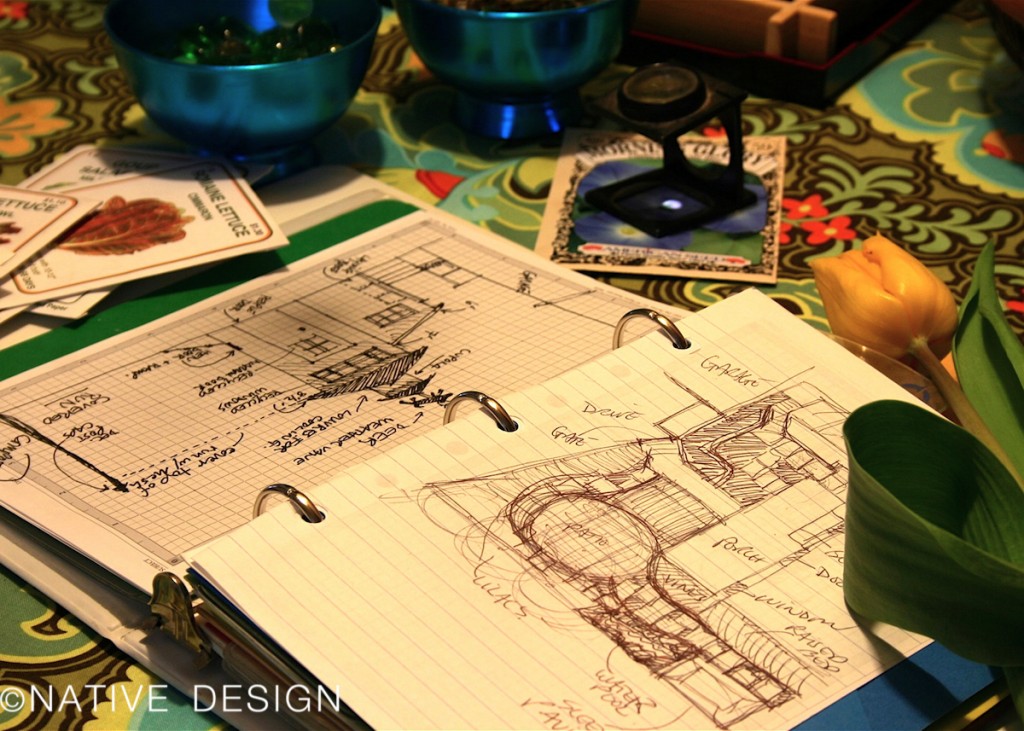
 I’ve kept a separate notebook or journal for my garden for years. Off and on. I’m not as disciplined as I’d like to be about keeping track of what is planted where; which plants are blooming when; what I’ve spent on the garden … or where I bought my materials, pots, and other stuff.
I’ve kept a separate notebook or journal for my garden for years. Off and on. I’m not as disciplined as I’d like to be about keeping track of what is planted where; which plants are blooming when; what I’ve spent on the garden … or where I bought my materials, pots, and other stuff.
Sometimes my garden journal is just a few pages in my regular sketchbook or journal. For the last few years, I’ve used a smallish 3-ring binder pages I have customized and punched to fit. I use different kinds of paper depending on what I’m recording on it: graph paper for recording my veggie plots and for sketching ideas for construction projects. Heavy sketch paper for botanical and nature sketches and for just doodling ideas. Vellum envelopes with holes punched in them, for keeping plant labels and other odds and ends (receipts, etc)… plastic sleeves with 3-holes, these are handy for seed packets, photos, loose seeds, etc.
I have my journal divided into sections with pocketed dividers – the pockets come in handy for keeping loose stuff. If you make your own journal, you can make sections to fit the kind of information you want to keep about your garden. Here are some ideas for record-keeping and inspiration:
- a plan view of the garden, drawn on plain or graph paper: this is not only to remember the layout of your plant beds and locations of special plants — but also to help you imagine improvements you might want to make
- weather records for our city and growing zone: first and last frost dates, rainfall, snowfall, and extreme events such as hail storms (which always seem to hit us hardest the week after we have set out our basil and tomato seedlings!)
- seed packets and plant labels: if you have a sheet for each plant, you can keep the packets in envelopes taped to the back of the sheets. Otherwise, a separate section for seed packets and plant labels is a good idea. I like to keep track of the nurseries where I bought potted plants
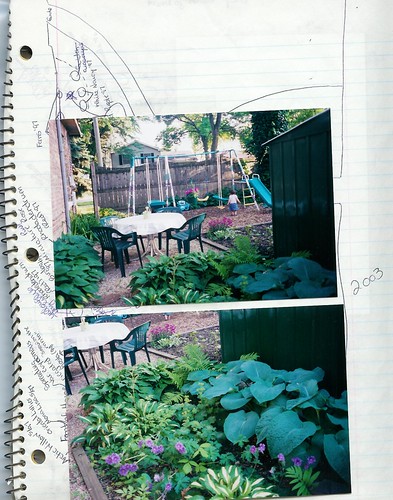 photos and/or sketches to document what’s growing throughout the year. I pair the photos with sheets on the individual plants. I also have a section for just beautiful photos of my garden
photos and/or sketches to document what’s growing throughout the year. I pair the photos with sheets on the individual plants. I also have a section for just beautiful photos of my garden
- garden tasks: wish I were organized enough to write down the dates I did (or should have done) certain tasks like weeding, planting and pruning. It would help with planning
- wish list: this is a fat section for me — there is always something I’d like to buy or make myself: wind chimes, plants, compost, a teak recliner, porch swing … or hardscape improvements I want: a deck, french doors, a little patio … dream on. Writing these things down or keeping clippings and photos helps me remember and prioritize. I had a garden pond on the wish list for years. A few years ago, my son, Mickey helped me make it a reality. So it works!
- clipped or photocopied articles, reference stuff from books and gardening handouts. This is a good place to keep reference materials from garden lectures or how-to courses, or instructions for making things for your garden
- use the journal to keep pressed leaves and flowers from your garden.
- Instead of pressing the plant parts, if you’re feeling creative, make sunprints using light-sensitive print paper.
- I keep a running list of wildlife I’ve seen in our garden, which is a certified wildlife habitat garden now
- quotes about gardening and my thoughts inspired by connecting with my garden
- ideas for cooking from the garden and recipes for salsa, pesto, quiche…
- I try to keep track of how much I spend in the garden. It’s always more than I thought! Sometimes I don’t keep the receipts, I just write the costs down kind of haphazardly
some links:
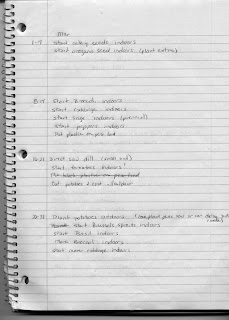 lots more information about materials you’ll need and how to get started –they even have some templates you can download for plant record-sheets
lots more information about materials you’ll need and how to get started –they even have some templates you can download for plant record-sheets
- Keeping a Garden Journal: what to use for a garden journal and what to keep in it
 Bitter Betty: I love her sense of humor and highly recommend this blog post. Will her garden ever sit up and pay attention?
Bitter Betty: I love her sense of humor and highly recommend this blog post. Will her garden ever sit up and pay attention?
 Journaling Life has some good links to resources, along with ideas for what to keep in your garden journal. Thank you to Denise, Leslie, Gayla, Lisa and BitterBetty
Journaling Life has some good links to resources, along with ideas for what to keep in your garden journal. Thank you to Denise, Leslie, Gayla, Lisa and BitterBetty
Please click on the photos to find links to their photo pages.
